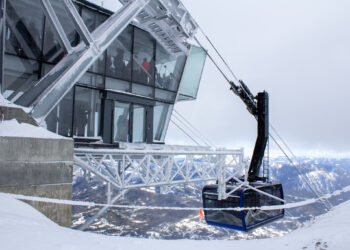By Dave McEvoy, Aerie Backcountry Medicine
Where do you go when you are outdoors in a lighting storm? Unfortunately, no one can say with certainty.
Most lightning advice assumes you have recourse to a building or a non-convertible car, where your chances of injury are very small. Some of the advice, such as assuming the “lightning position” (where you squat in a ball while the storm rolls over you) is best performed by a yogi or Cirque du Soleil artist.
We can, however, learn from the 40 years of data that shows where people are most often struck by lightning. About 80 percent were in open fields, on water or under trees. In the West, strikes are most common during hot summer afternoons.
Most people injured by lightning are not actually struck directly, but are instead in contact with objects that are hit. Plan your activities to best avoid those places and objects, spread your group out, and be prepared to care for those who are injured.
Beyond that, there are some reasonable positions to get into that may minimize your chance of being struck.
If you cobble together smart travel and first aid knowledge and avoid the big no-no’s from the list below, you’re probably doing as well as you can, so you might as well enjoy the storm and ride it out.
Predicting strikes
You can’t. But, you can make some well-informed, educated guesses.
• Many people struck by lightning are hit as the storm approaches or as it’s leaving the area, sometimes when the sky is clear above. This means you need to get away from dangerous areas before things around you are exploding.
• A commonly used guideline for lightning safety in public places like stadiums is the 30/30 rule: If the time between the flash and the boom is less than 30 seconds, avoid the more dangerous places for 30 minutes. It certainly helps to have a building or car to move to.
• If the electrical activity of a storm is very close, your hair may stand up, you may hear crackling static, or metal objects around you may glow. If you haven’t gotten yourself to a better location or in a better position, do it now.
Geographic position
It’s easier to describe where not to be than to list where you should be when lighting is around. No outdoor place is perfect, but some are worse than others. These typically include:
• High places like ridges or mountaintops
• Tall objects like trees
• Metal objects like fences and poles (by the way, these things don’t actually attract lightning, they’re just very good at conducting electricity)
• Open water or on the shoreline
• Open fields
• Tied in to your climbing rope
Body position and group dynamics
After you’ve changed your geographic position (moved out from under the tree), or if you’re stuck with nowhere to go, you need to change the position of your body. These recommendations are based on a good understanding of lightning but scant data. Turns out it’s hard to get people to sign up for lightning-strike studies.
• Sit down. Try to avoid lying down.
• Get off the ground by using an insulating pad like a Thermarest.
• Spread your group out so there’s about 50 feet between each person. This doesn’t decrease your chance of being struck, but it makes it less likely that more than one person will be struck at a time.
Common injuries
Lightning injuries can be simple and fleeting or devastating and permanent.
• Loss of consciousness, amnesia and confusion
• Loss of hearing and or vision
• Extremity injuries (often from being thrown or having things that were thrown land on you)
• Burns. Significant, large burns are unusual and quite a bit of what looks like a burn may in fact be other things like simple pigment changes.
• Paralysis. Again, may be temporary.
First aid
The tens of millions of volts that travel through a body and leave within a thousandth of a second can cause some unusual, distinct and often permanent injuries; however, there is nothing unique about the care you need to render in the field. What is unique is the way you need to go about finding them.
• Because people like to get together in a storm, they often get struck together. If this has happened, figure out who is dead and who is not, do CPR on the former and evacuate the latter. This is probably the only situation where CPR on its own, without a defibrillator, will have a high likelihood of bringing a pulse back.
• While figuring out how to get out of the backcountry, splint injuries, stop bleeds and otherwise render basic first aid. Don’t hang around in the place that was struck, particularly if it’s on the list of likely strike locations.
Additional information can be found at lightningsafety.noaa.gov
David McEvoy is a paramedic and the director of Aerie, a wilderness medicine training organization based in Missoula. aeriemedicine.com. Aerie is teaching a Wilderness First Responder and Wilderness EMT course this fall on the MSU campus in Bozeman.










